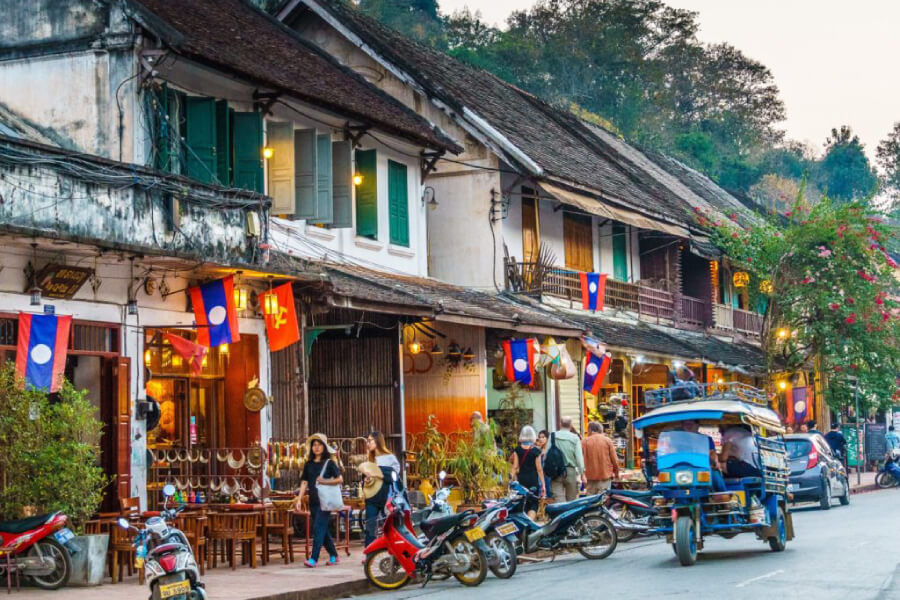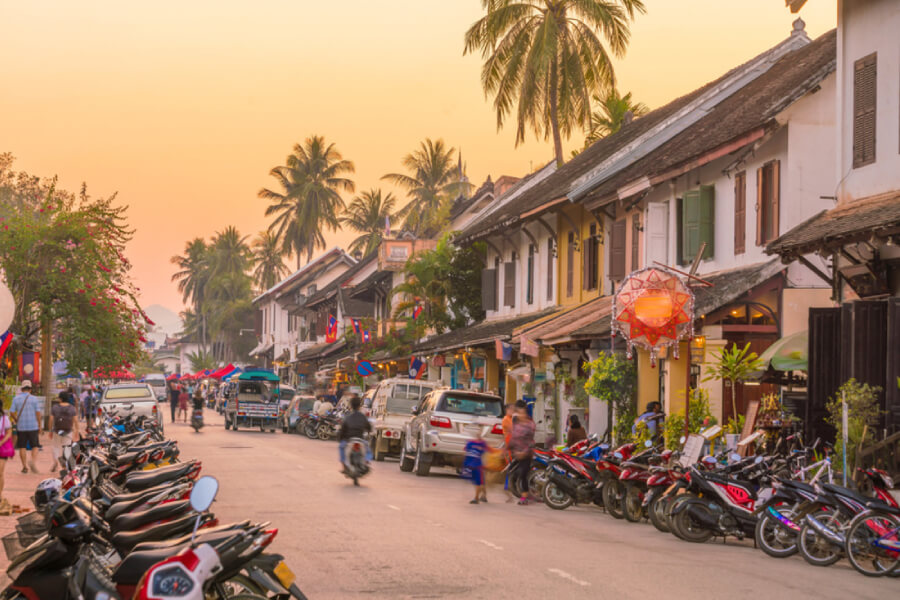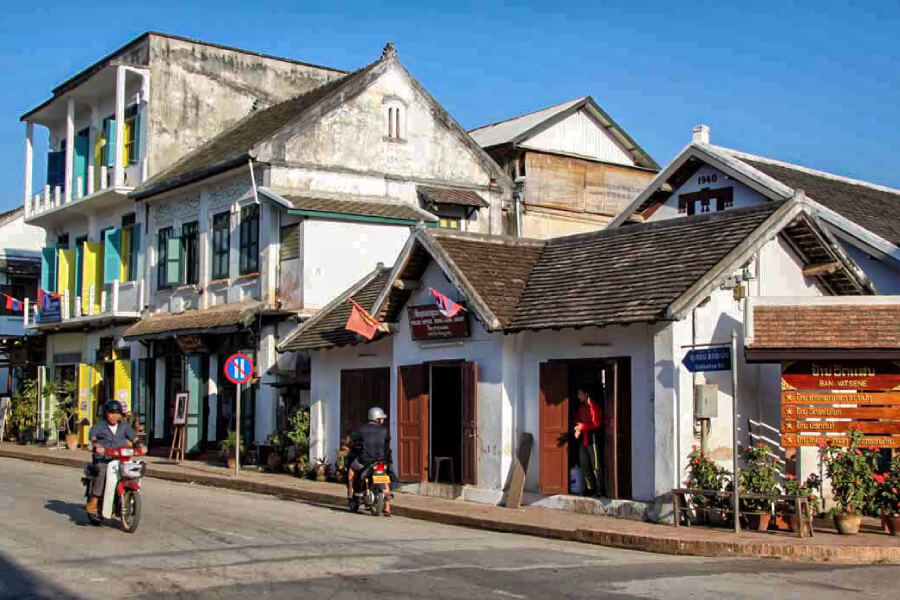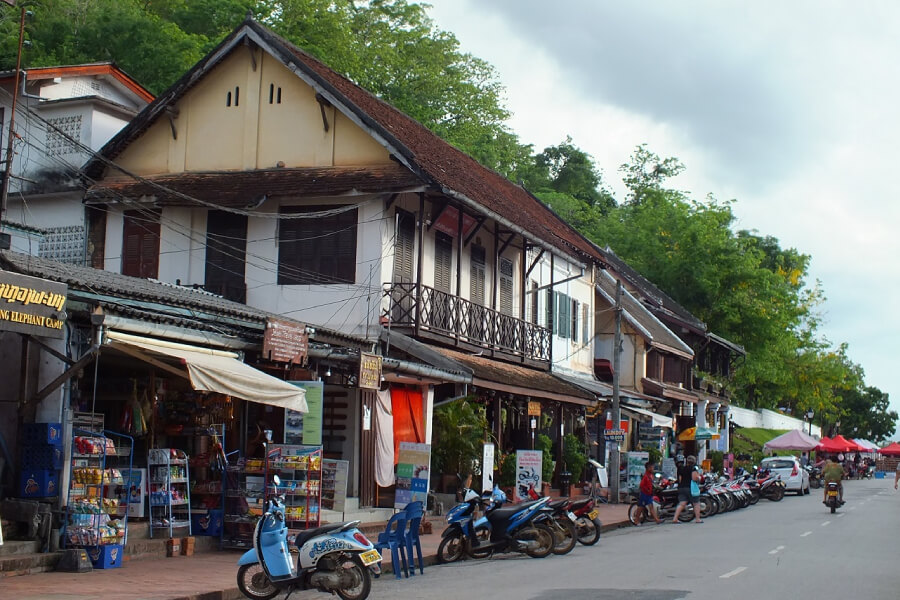Tucked away amidst the picturesque landscapes of Laos, the Old Quarter of Luang Prabang is a captivating microcosm of history and culture. As a UNESCO World Heritage-listed site, it serves as a living testament to the city's remarkable past. Stepping into the Old Quarter is like taking a journey through time, where the echoes of history resonate through the cobbled streets and ancient temples. For those embarking on Laos tours, this historic gem is a must-visit destination.
Preserving the Timeless History of Old Quarter Luang Prabang
The story of Luang Prabang's Old Quarter begins in the 14th century when it was founded by King Fa Ngum, the visionary leader who established the Lan Xang Kingdom. The city derived its name from the sacred Pha Bang Buddha image, a revered relic that resided within its walls and was the embodiment of the city's spiritual and cultural significance.
Throughout its history, Luang Prabang has been a center of Buddhist faith and practice. The city is adorned with numerous monasteries and temples, many of which have endured the passage of time. These spiritual sanctuaries are not only places of worship but also remarkable examples of the architectural diversity that characterizes Luang Prabang. The coexistence of French colonial architectural elements with traditional Lao design is a testament to the city's rich cultural heritage.
The late 19th and early 20th centuries ushered in a new era for Luang Prabang when it came under French colonial rule. French colonial architecture and administrative influences left an indelible mark on the city's infrastructure and design. The fusion of French and Lao styles in the city's buildings and boulevards adds a unique and captivating aesthetic dimension to Luang Prabang.
For centuries, Luang Prabang stood as the royal capital of the Kingdom of Laos. The grandeur of this period is encapsulated in the Royal Palace, which now functions as a museum open to visitors. The royal residences, with their timeless architecture and traditional charm, provide a window into an era that continues to influence the city's character.
In 1995, UNESCO recognized the historical importance of Old Quarter Luang Prabang, designating it as a World Heritage Site. This prestigious recognition underscores the city's remarkable preservation of both its traditional Lao and French colonial heritage.
Cultural traditions form the beating heart of Luang Prabang's history. The daily almsgiving ceremony, where Buddhist monks collect offerings of food from local residents and visitors, is a practice that has persisted for centuries. This spiritual ritual serves as a poignant reflection of the city's spiritual heritage and cultural continuity.
Today, Old Quarter Luang Prabang stands as a living museum where history reverberates through every lane, temple, and building. Preservation efforts continue to ensure that the city's remarkable history remains an integral part of its present and future. The commitment to preserving this history goes beyond architecture; it is a dedication to the soul of Luang Prabang itself.
Architectural Splendors of Old Quarter Luang Prabang: A Journey Through Time
The essence of Luang Prabang's architectural grandeur lies in the elegance of traditional Lao design. The city's buildings are adorned with intricate wooden carvings, gabled roofs, and a sense of timelessness. The temples, monasteries, and traditional homes, all resplendent with their unique features, create a harmonious tapestry of Lao architectural beauty.
However, Luang Prabang's architectural narrative is far from one-dimensional. The late 19th and early 20th centuries ushered in an era of French colonial rule, leaving an indelible mark on the city's architecture. French colonial elements, from wrought iron balconies to shuttered windows and pastel-colored facades, beautifully coexist with traditional Lao structures. It is this fusion of styles that distinguishes Luang Prabang's architectural charm as unique.
Wat Xieng Thong, a Buddhist temple dating back to the 16th century, epitomizes traditional Lao temple design. It showcases grand gabled roofs, intricate gold stenciling, and a sense of spiritual serenity. The temple's architecture reflects the finest craftsmanship of the era and provides a tangible link to the city's spiritual heritage.
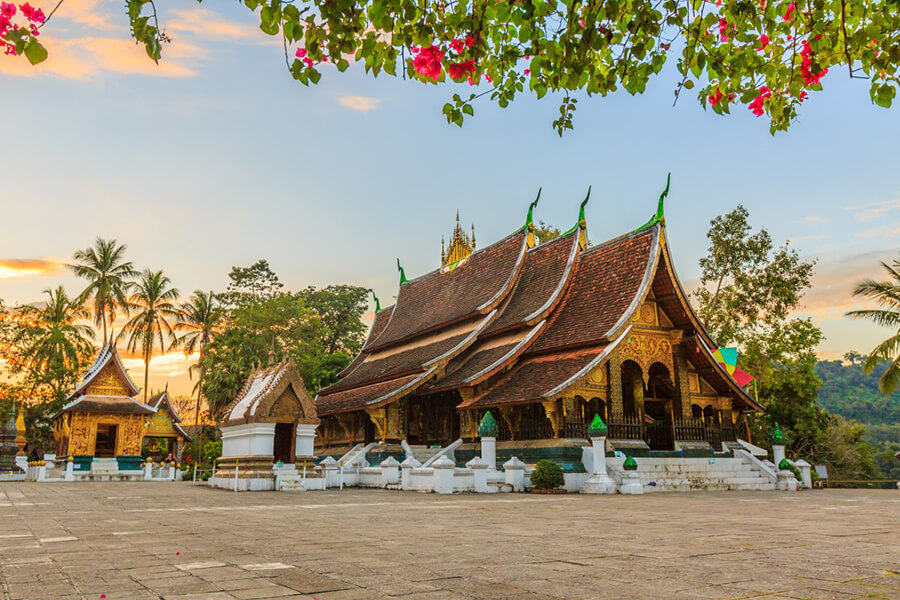
The Royal Palace of Luang Prabang, now a museum, is a testament to the city's historical transitions. Traditional Lao elements seamlessly blend with French colonial influences, creating a captivating architectural symphony. The ceremonial halls, adorned with gilded facades, and the residential quarters, housing historic artifacts, offer a window into the royal legacy.
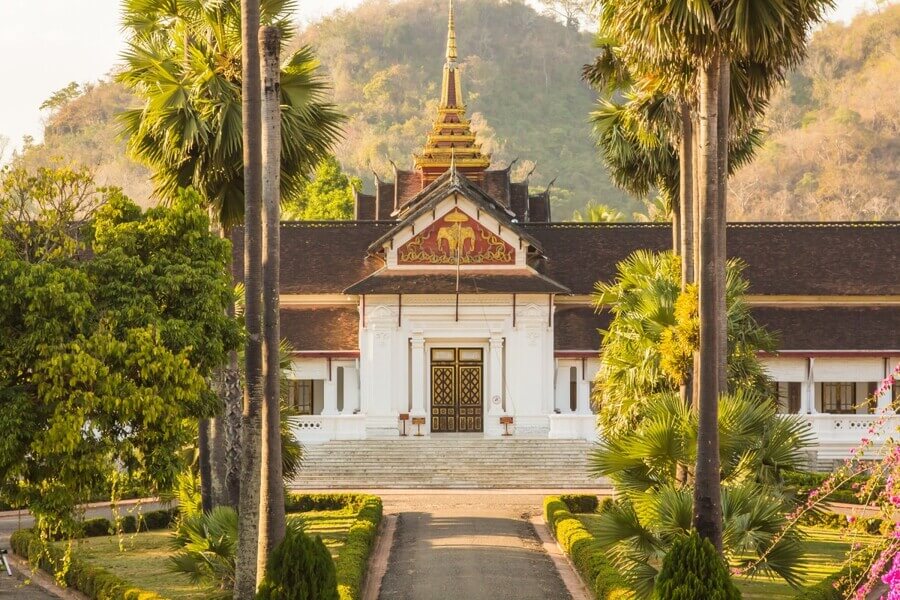
Wat Mai Suwannaphumaham, another exquisite temple, stands as a tribute to traditional Lao architecture. Its striking red and gold facade, intricate artwork, and golden bas-relief depictions of the Ramayana create an ambiance of timeless beauty and spiritual reverence.
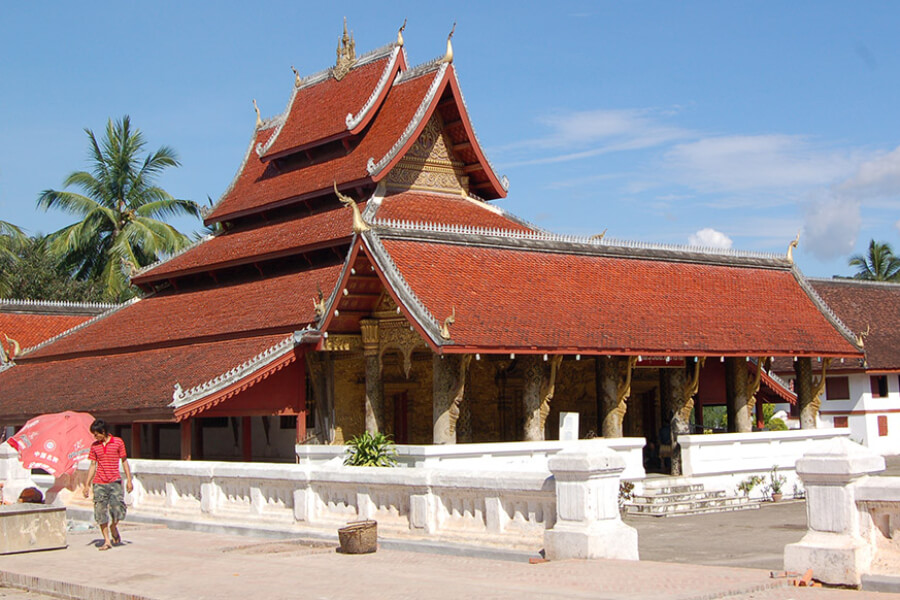
Among the colonial-era residences of Old Quarter Luang Prabang, several have been transformed into boutique hotels and guesthouses. They offer a unique opportunity to experience the ambiance of French colonial architecture, boasting high ceilings, wide verandas, and an air of nostalgia.
What truly sets Old Quarter Luang Prabang apart is its unwavering commitment to preservation and conservation. Local authorities and international organizations work in unison to safeguard these architectural treasures, ensuring that the city's rich history remains intact for future generations to appreciate and admire.
Culinary Delights - Savoring Authentic Lao Cuisine in the Old Quarter Luang Prabang
The day commences with the vibrant bustle of Luang Prabang's markets. A stroll through the local market is a visual and olfactory delight. Here, you'll discover an abundance of fresh produce, vibrant spices, and fragrant herbs. As the sun ascends, locals and travelers alike congregate to enjoy a cup of aromatic Lao coffee. Accompanying their coffee is a steaming bowl of Khao Piak Sen, a rice noodle soup embodying the essence of Lao cuisine. The broth is rich, the flavors are profoundly satisfying, and it's the perfect way to commence your day. For those with a preference for a touch of the city's colonial history, a warm baguette filled with Lao pâté is a delightful option, reflecting the enduring French influence in Lao culinary traditions.
Wandering through Luang Prabang's charming streets, you'll inevitably encounter street vendors offering Khao Jee sandwiches. These sandwiches are the quintessential street food delight. They feature marinated grilled pork or chicken, fresh herbs, and a drizzle of zesty sauce, all encased within a freshly baked baguette. It's a symphony of flavors and textures that will leave your taste buds tingling with delight.
For an authentic Lao dining experience, you must immerse yourself in Luang Prabang's noodle soup, known as Khao Poon. This bowl of culinary artistry comprises a fragrant and spicy broth filled with rice vermicelli, tender meat (often chicken or fish), fresh herbs, and a medley of vegetables. It's a dish renowned for its authenticity and the complexity of flavors it offers. To complement this flavorful journey, Or Lam, a traditional Lao stew comprised of meat, eggplant, and a variety of fragrant Lao herbs, epitomizes the intricacy of Lao cuisine.
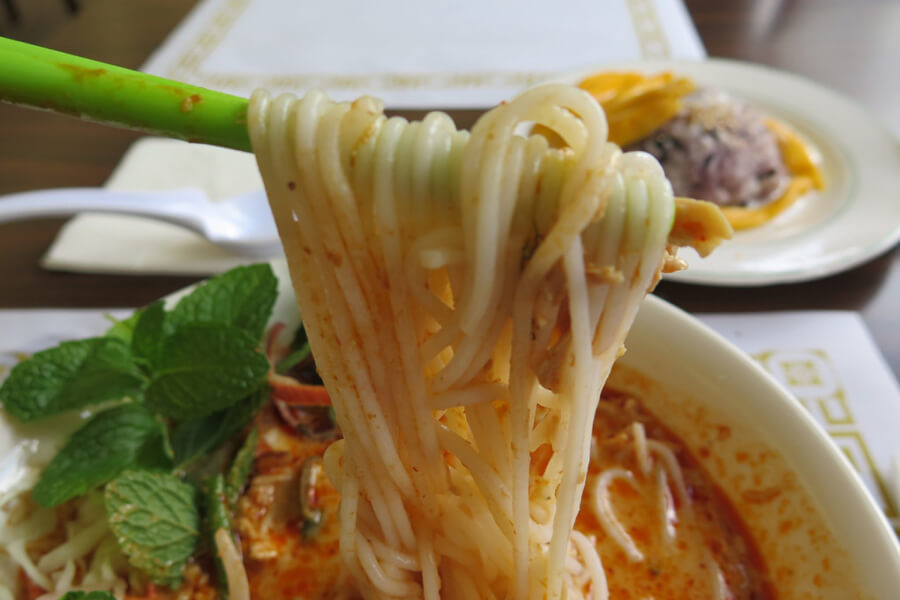
As the sun sets, the Night Market in the Old Quarter comes to life with an enticing array of street food. Venture into the lively market and explore its culinary offerings. Sai Oua, a Lao sausage infused with lemongrass and herbs, is a must-try, as are the grilled skewers of marinated meat. This is where you can sample a variety of Lao snacks, including crispy riverweed and sweet coconut pancakes. Each bite is an expedition into local flavors.
No culinary journey is complete without indulging in traditional Lao desserts. Khao Tom, a sweet and sticky rice dish with a luscious coating of sweet coconut, is a treat for the sweet tooth. Khanom Kou, a popular Lao jelly dessert with vivid colors and delicate textures, is another favorite. These sweet indulgences provide the perfect conclusion to a day filled with savory experiences.
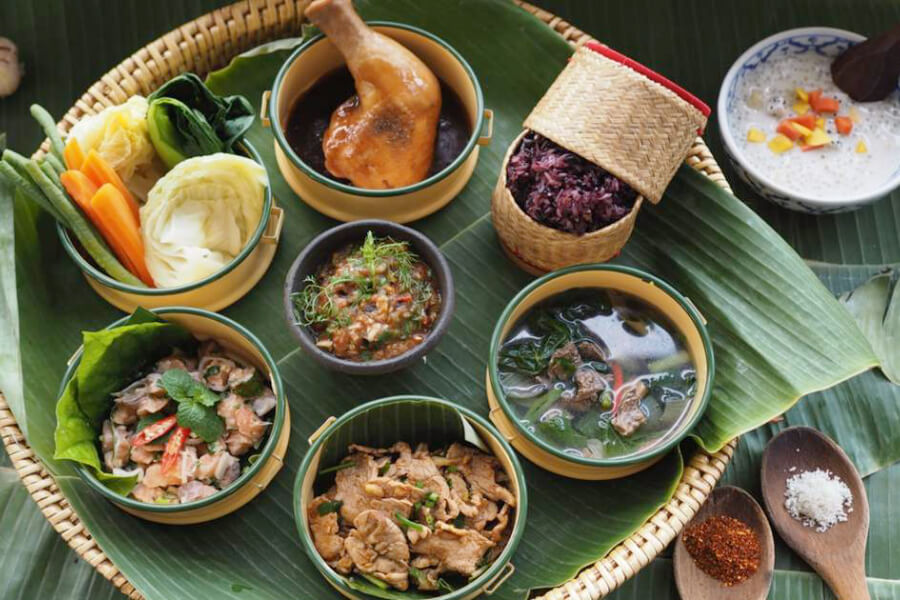
Cultural Experiences in Old Quarter Luang Prabang
Almsgiving to Monks: Each morning, as the sun gently illuminates the ancient streets of Luang Prabang, locals and visitors gather to participate in the age-old tradition of almsgiving to monks. Clad in saffron robes, Buddhist monks walk silently along the streets to collect offerings of rice and other essentials. Joining this ritual provides a profound insight into the spiritual heart of Luang Prabang.
Baci Ceremony: The Baci ceremony is a traditional Lao ritual that celebrates important life events and occasions. It involves the tying of symbolic white strings, or "sai sin," around a person's wrist to bestow blessings, good luck, and well-wishes. Participating in a Baci ceremony is a cultural journey into the beliefs and customs of Luang Prabang's people.
Temple Visits and Candle Lighting: Luang Prabang is home to numerous temples, each with its own unique rituals and ceremonies. Visitors can explore these sacred sites, observe Buddhist rituals, and even participate in candle lighting ceremonies to pay respect to the Buddha and seek blessings for loved ones.
Traditional Dance Performances: Old Quarter Luang Prabang often comes alive with traditional dance performances. These dances, often accompanied by melodious music, depict local legends, stories, and myths. Enjoying these performances is a vibrant and engaging way to connect with the culture of the region.
New Year Celebrations: Lao New Year, known as "Pi Mai Lao," is a vibrant and festive time in Luang Prabang. It's a period of water festivals, temple visits, and community gatherings. Visitors can actively participate in these joyful celebrations, where traditions are upheld and shared.
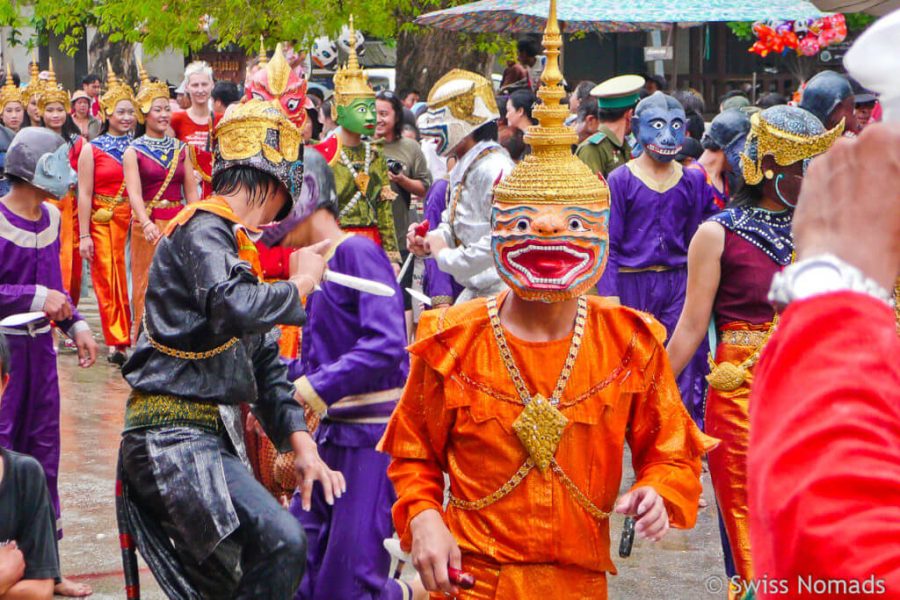
A Day in the Life: An Itinerary for Immersing Yourself in the Old Quarter Luang Prabang
Like we've explored, the intertwining lanes and alleys of the Old Quarter house centuries of traditions, each corner revealing stories of the past. The ancient temples, the graceful almsgiving ceremonies, and the vibrant night markets are all facets of a living history that continue to thrive. The sense of spirituality and deep-rooted customs in Luang Prabang are both enchanting and humbling.
In the heart of this remarkable town, where the Nam Khan and Mekong Rivers converge, you'll discover a world where serenity and tradition coexist. Old Quarter Luang Prabang invites you to explore its storied past and participate in its living culture, creating memories that will stay with you long after you've left its ancient streets.
Visit Old Quarter Luang Prabang and embark on a journey where history and culture come together to form an unforgettable experience. It's a place where the echoes of the past resonate in the present, and the threads of tradition are woven into the fabric of daily life. It's a destination where history and culture not only intersect but also become a part of your own story.
